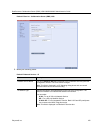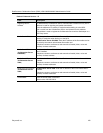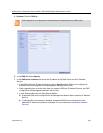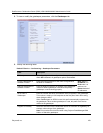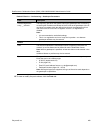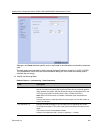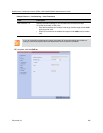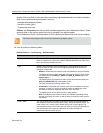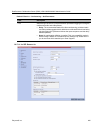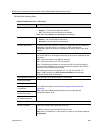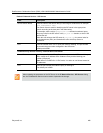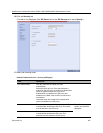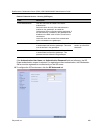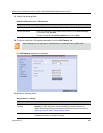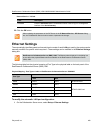
RealPresence Collaboration Server (RMX) 1500/1800/2000/4000 Administrator’s Guide
Polycom®, Inc. 483
Quality of Service (QoS) is important when transmitting high bandwidth audio and video information.
QoS can be measured and guaranteed in terms of:
• Average delay between packets
• Variation in delay (jitter)
• Transmission error rate
DiffServ and Precedence are the two QoS methods supported by the Collaboration Server. These
methods differ in the way the packet’s priority is encoded in the packet header.
The Collaboration Server’s implementation of QoS is defined per Network Service, not per endpoint.
13 View or modify the following fields:
The routers must support QoS in order for IP packets to get higher priority.
Default IP Service – Conferencing – QoS Parameters
Field Description
Enable Select to enable the configuration and use of the QoS settings.
When un-checked, the values of the DSCP (Differentiated Services Code Point)
bits in the IP packet headers are zero.
Type DiffServ and Precedence are two methods for encoding packet priority. The
priority set here for audio video and IP Signaling packets should match the
priority set in the router.
•DiffServ: Select when the network router uses DiffServ for priority encoding.
The default priorities for both audio and video packets is 0x31. These values
are determined by the QOS_IP_VIDEO and QOS_IP_AUDIO flags in the
system.cfg file.
The default priority for Signaling IP traffic is 0x00 and is determined by the
QOS_IP_SIGNALING flag in the system.cfg file.
For more information Modifying System Flags.
• Precedence: Select when the network router uses Precedence for priority
encoding, or when you are not sure which method is used by the router.
Precedence should be combined with None in the TOS field.
The default priority is 5 for audio and 4 for video packets.
Note: Precedence is the default mode as it is capable of providing priority
services to all types of routers, as well as being currently the most common
mechanism.
Audio / Video You can prioritize audio and video IP packets to ensure that all participants in
the conference hear and see each other clearly. Select the desired priority. The
scale is from 0 to 5, where 0 is the lowest priority and 5 is the highest. The
recommended priority is 4 for audio and 4 for video to ensure that the delay for
both packet types is the same and that audio and video packets are
synchronized and to ensure lip sync.



